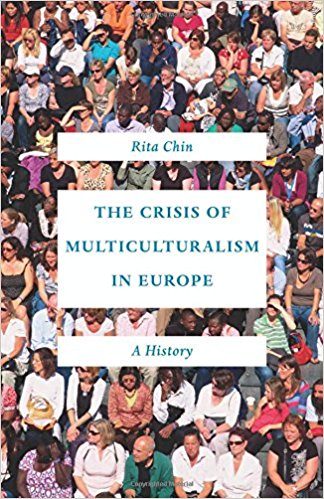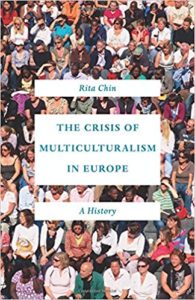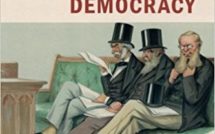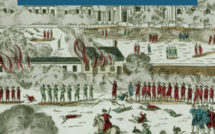
 This is part of our special feature on Nationalism, Nativism, and the Revolt Against Globalization.
This is part of our special feature on Nationalism, Nativism, and the Revolt Against Globalization.
As rightwing nativist parties gain traction across the Continent, Europeans’ fraught relationship to ethnically and religiously diverse minority populations, and particularly Muslim migrants, is at the forefront of national and international debates. These debates cannot, however, be understood solely in the vacuum of the ongoing “refugee crisis,” nor in light of the rising Islamophobia since the September 11, 2001 terrorist attacks. As Rita Chin argues in her new book, The Crisis of Multiculturalism in Europe: A History, the origins of contemporary debates about the merits of cultural pluralism extend as far back as the end of the Second World War. Central to these debates was multiculturalism, a contested concept that, in 2010, Western European heads of state unanimously pronounced a failure. Comparing the development of multiculturalism both within and across nation-state borders, Chin’s comprehensive account contributes greatly to our understanding of one of the most significant issues facing Europe today.
The study explores a compelling historical question: “How do we make sense of each country’s distinct historical contexts, ideologies, and policies for dealing with diversity, on the one hand, and the fact that these efforts largely converged into a European-wide discourse on multiculturalism, on the other?” Writing a comparative history that both preserves distinctions and argues for a “shared history” is no easy feat, but Chin has accomplished the task well. Throughout five thematically and chronologically organized chapters, Chin weaves together the three largest national cases – Great Britain, France, and Germany – and incorporates Switzerland and the Netherlands as “useful foils.” To address the inherent challenge of encompassing the breadth of these cases, Chin synthesizes leading scholarship and strategically incorporates primary sources, particularly in the British and German cases, where her linguistic specialties lie. The result is a wide-ranging yet nuanced account that is sure to become a leading text for scholars and teachers of contemporary Europe and global migration history.
Examining the longer postwar history of immigration allows us to see that European responses to diversity have not “just pushed in a linear direction.” Rather, the trajectories of public debate and policymaking show that these responses “vacillated between different forms of openness and exclusion at different junctures.” The initial period of openness occurred at the end of the Second World War, which, in Western European master narratives of postwar rupture, marked the first time that European societies encountered cultural difference. While dispelling the “myth” of pre-1945 European homogeneity, Chin argues that the claim does have some validity. Europeans who lived through the postwar transition understood the demographic transformations as “qualitatively different—a new kind of diversity.” As Chin explores in her first chapter, the “twin concerns of empire and labor” – decolonization and government-sponsored guest worker programs – resulted in the arrival of newcomers who were non-European, non-Christian, and nonwhite. Nevertheless, Europeans largely welcomed their presence because it contributed to postwar economic recovery and because they viewed their stay as a temporary phenomenon.
This moment of openness toward immigration ended with the recession following the 1973 oil shock, which hardened policymakers’ resolve to curb immigration and guest worker recruitment. In the 1970s, Western European governments implemented a variety of strategies to accomplish the dual aim of restricting further immigration and managing the diversity of those immigrants already there. In the second chapter, Chin provides a clear country-by-country categorization of these strategies: “race relations” in Britain, “pillarization” in the Netherlands, “insertion” in France, and “foreigner policy” in Germany (in Chin’s words, better described as “willful neglect”). Although each country demonstrated varying degrees of openness to cultural pluralism, they shared a crucial facet: as mainstream political parties sought to avoid “potentially explosive national debates” about immigration, bureaucrats implemented policies largely behind-the-scenes in a manner that was “cold, efficient, and largely invisible” to the public.
It was not until the 1980s, Chin argues in her third chapter, that debates about immigration exploded into the public sphere and that multiculturalism emerged as the main trope by which policymakers understood the relationship of immigrants to Western European society. The conservatives who gained power in the 1980s excluded ethnic and religious diversity from their projects of national revitalization, and emphasized non-European settlers’ innate “cultural difference.” The growing support for cultural pluralism stemmed from the notion that immigrants’ distinct cultures rendered them unable to assimilate into mainstream Western European society. By invoking the language of cultural difference, policymakers managed to circumvent the biological notions of race that had become discredited in the aftermath of the Holocaust, while still articulating similar racialized ideologies. Although this convincing argument will be familiar to readers of Chin’s co-edited volume After the Nazi Racial State: Difference and Democracy in Germany and Europe, Chin strengthens it by demonstrating its applicability not only to West Germany but also across Western Europe.
Spanning the third and fourth chapters, Chin explores how religion – particularly Islam – became the central marker of ethnic and racial difference in the 1980s and beyond. Islam’s centrality to these debates was not evident from the first postwar decades. The widespread perception of Islam’s fundamental incompatibility with European societies crystallized with two events in 1989: the Salman Rushdie affair and the French headscarf debate. The Rushdie affair, Chin contends, “marked the moment when Muslim immigrants with diverse national origins merged into a single, distinctive category” and when Islam itself – rigidly conceived as innate, inherited, and inadaptable – became viewed as an existential threat to Western values. The French Creil controversy over headscarves, which occurred just seven months later, not only confirmed the growing suspicion about Islam’s illiberalism, but also made concerns about gender and sexuality central to debates about immigration among both conservatives and left-leaning feminists.
In the final chapter, Chin explores how the concerns about the illiberal nature of “Muslim culture” transformed into European leaders’ “sweeping rejection” of multiculturalism and embrace of uncompromising assimilation by 2010. In the backlash to the Rushdie and headscarf affairs, Western European critics blamed multiculturalism itself for allowing an illiberal and intolerant Islam to take root and flourish in liberal, democratic societies. As the post-Communist push for European unification embraced liberal, democratic values as a shared feature of the New Europe, Western Europeans increasingly adopted a “bipolar worldview” that separated Islam from Western societies. The 9/11 terrorist attacks intensified this discourse by viewing Islam not only as culturally incompatible but also as an existential security threat to Europe itself.
Chin concludes with a powerful reflection on what the death knell for multiculturalism means for the present and future of Europe. The criticism of multiculturalism across the political spectrum reveals that leftist constituencies have adopted the right’s privileging of individual freedom over more collective and pluralist notions of freedom. In so doing, they have ceded their historical role as a “progressive vanguard” in relation to immigration and social tolerance. Chin also argues that multiculturalism, however fraught, was important precisely because the concept’s contestation provided the opportunity for both European and immigrant critics to reconsider the otherwise “closed and settled” boundaries of national belonging and to envision more inclusive conceptions of European societies. In stifling these meaningful debates and conceding that cultural diversity is “simply unworkable” in Europe, policymakers have failed to address the realities on the ground and have created a “democratic deficit, a situation in which immigrants are effectively written out of the social body.”
In addition to strong research and argumentation, the study demonstrates a number of useful methodological approaches to writing an inclusive, comparative history of postwar Europe. Although Chin’s approach is largely top-down, she incorporates the voices of immigrant activists – particularly of secular Muslim women and of immigrant critics of multiculturalism – and infuses her larger narrative with lesser-known events that occurred at the local level. By highlighting immigrant voices, Chin demonstrates that multiculturalism is not only a shared history of European societies but also a shared history of diverse immigrant groups, which include people from the Caribbean, India, Pakistan, Bangladesh, Algeria, Morocco, Tunisia, Senegal, Mali, Turkey, and the former Yugoslavia, who identified as Christian, Orthodox, Muslim, Hindu, and Sikh. In this vein, an exciting complement to Chin’s book would be an examination of how immigrants – from activists to ordinary individuals – understood European debates about diversity and multiculturalism and viewed themselves not only in relation to “native” Europeans but also to other immigrant groups both locally and abroad.
By weaving together five national cases, Chin provides a model for writing comparative histories of how other European states have managed diversity. As we broaden our understandings of European migration history, we might consider how the narrative would differ or change if we undertook the – albeit ambitious and linguistically challenging – project of comparing these larger cases to some of the smaller cases of East Germany, Austria, Hungary, and Poland, all of which are currently experiencing resurgences of far-right nativism; or societies that historically sent rather than received laborers, such as Italy, Spain, Portugal, Greece, Turkey, and the Balkan countries. Comparing historical developments across the entire European Continent will help us better understand Europeans’ approaches to diversity today.
As historians are increasingly turning to questions of migration and multiculturalism in both our scholarship and teaching, this book offers a long-awaited and concise explanation of differences and similarities across Western European national contexts. Chin’s accessible language and repetition of key points and contexts throughout makes it not only a powerful scholarly work but also an excellent teaching tool that is sure to earn its place on the bookshelf of scholars of all disciplines interested in Modern Europe, migration, race/ethnicity, and gender/sexuality.
Reviewed by Michelle Lynn Kahn, Stanford University
The Crisis of Multiculturalism in Europe: A History
by Rita Chin
Publisher: Princeton University Press
Hardcover / 384 pages / 2017
ISBN: 9780691164267
To read more book reviews, please click here.
Published on February 1, 2018.




